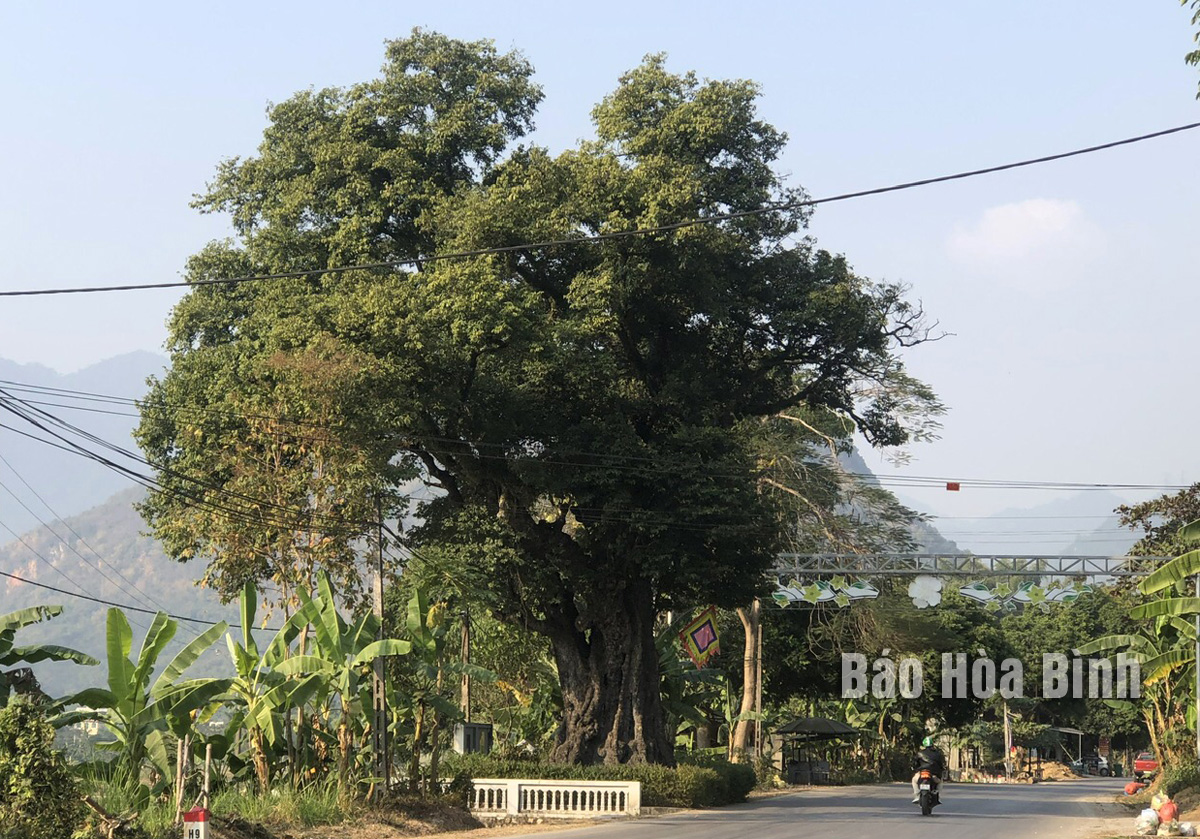
Authorities and residents of Chieng Chau commune, Mai Chau district, are making efforts to preserve and promote the historical value of a centuries-old gold apple tree (scientifically known as diospyros decandra lour), which has been recognised as a national heritage tree.

The gold apple tree in Mo hamlet, Chieng Chau commune, is regarded as a
"living witness" to the ups and downs of Mai Chau's history.
Located
in Mo Hamlet, the tree has stood through centuries of history, from executions
in legendary battles to massacres under French colonial rule. During wartime,
it provided shelter for guerrilla forces, withstanding heavy bombing and
remaining resilient to this day.
Recognised
as a Vietnamese heritage tree in 2016, it stands as a symbol of resilience and
cultural pride for the local community.
Ha
Thi Yen, Secretary of the Party cell of Mo hamlet, highlighted the recognition
as an important step in preserving cultural identity and passing down
historical awareness to future generations.
Authorities
in Chieng Chau commune have also incorporated the tree into local tourism
development plans.
Ha
Van Tiep, Chairman of the commune People's Committee, noted plans to integrate
the site with other attractions like Lac hamlet and Pieng Kem Cave, aiming to
showcase both the area's natural beauty and historical significance.
The
preservation of the heritage tree is part of broader efforts to maintain
cultural heritage and promote spiritual tourism in the region.
Phong Phu commune, Tan Lac district of Hoa Binh province, is widely regarded as the cultural heartland of the Muong ethnic group. Among its many traditional communities, Luy Ai hamlet (formerly Ai hamlet) stands out as a rare location where the customs and way of life of the Muong Bi people remain largely intact.
The Truong Kha temple festival, a distinctive cultural event held every three years in Vu Ban township, Lac Son district, returned recently with vibrant rituals and folk traditions of the Muong people. Located next to the Buoi River in the Muong Trao fields, the Truong Kha Temple is dedicated to the three Kun Dol deities, revered for teaching farming techniques, irrigation, weaving, and protecting the harvest.
The demand for spaces serving community activities of residents in various areas across Hoa Binh city has been satisfied as local cultural houses now feature modern, spacious facilities thanks to the effective implementation of Resolution No. 49/NQ-HDND issued on December 28, 2021 by the city People's Council, which approved the plan for reorganising, converting, and allocating land for the construction, repair, and expansion of cultural houses in Hoa Binh’s villages and residential areas until 2025.
At the end of May, the Hoa Binh Provincial Ethnic Arts Troupe organized a series of performances for residents in Region 2 and Region 3 communes across the province. Bringing art to ethnic communities in remote, isolated, and especially disadvantaged areas has become a meaningful activity. These are not merely artistic performances but also journeys to disseminate cultural values, enrich spiritual life, and contribute to preserving the cultural identity of ethnic minorities.
In recent years, alongside the development of a tourism-oriented economy, the traditional brocade weaving craft of the Mong people in Pa Co Commune, Mai Chau district has been gradually preserved and promoted. It has become a unique indigenous cultural feature, contributing to improving the livelihoods of the ethnic minority community.
Hop Tien commune, Kim Boi district, Hoa Binh province is home to nearly 1,260 households with a population of over 5,700 people, 98% of whom are of the Muong ethnic group. Besides economic development, the commune places special emphasis on preserving and promoting the cultural identity of the Muong people.



